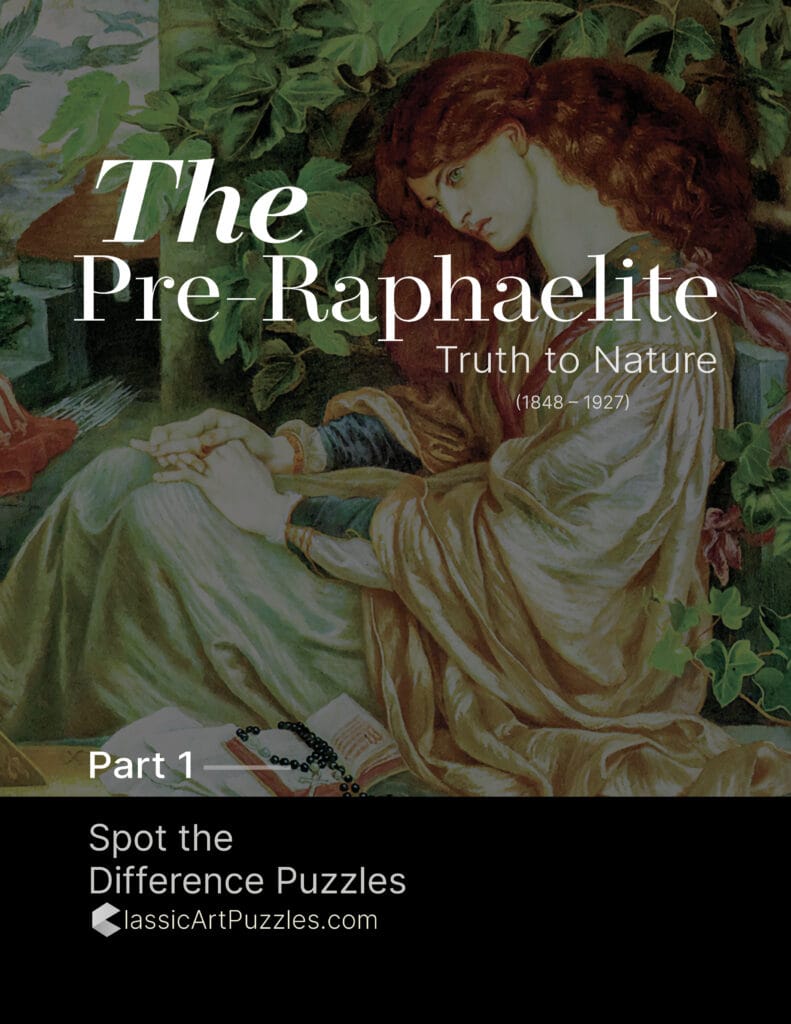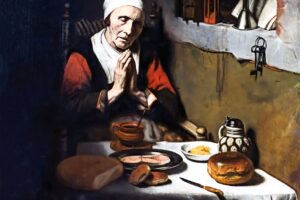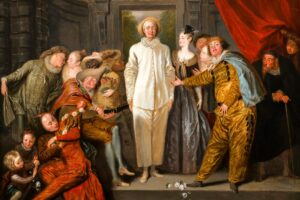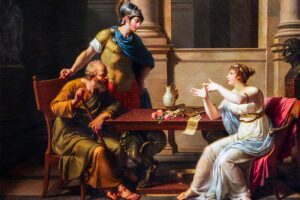Table of Contents
Overview
Why Seek Ye the Living Among the Dead (1870–1899) by John Roddam Spencer Stanhope depicts the Easter narrative with luminous clarity. Three women approach Christ’s tomb, carrying ointments and gifts, only to be greeted by an angel with radiant wings. His raised hand points heavenward, announcing the Resurrection, while roses bloom as signs of renewal and hope.
Stanhope (1829–1908), a central figure of the second generation of Pre-Raphaelites, infused his biblical subjects with Renaissance grace and jewel-like detail. Painted in Florence, this work reveals his mastery of symbolic harmony, blending naturalism with spiritual allegory.
When first exhibited, the painting drew admiration for its solemn dignity and decorative richness. Today, it endures as one of Stanhope’s most celebrated religious works, transforming scripture into a poetic vision of faith, triumph, and eternal life.
Stanhope: About the Artist
John Roddam Spencer Stanhope (1829–1908) was an English Pre-Raphaelite painter closely linked to Dante Gabriel Rossetti and Edward Burne-Jones. Based for much of his career in Florence, he absorbed the clarity and rhythm of Renaissance art, merging it with Pre-Raphaelite symbolism. His works often depicted biblical, allegorical, and mythological themes, distinguished by jewel-like colors and lyrical balance.
The Story Behind the Painting
Easter Morning Narrative
The painting illustrates Luke 24:5, where the angel asks the women at Christ’s tomb: “Why seek ye the living among the dead? He is not here, but is risen.” This pivotal moment in Christian belief symbolizes victory over death and the dawn of hope for humanity.
Stanhope’s Spiritual Vision
Stanhope painted several versions of this theme between 1870 and 1899, reflecting his lifelong devotion to spiritual allegory. For him, biblical stories were not only historical but universal parables of renewal, faith, and eternal promise.
Florence and Artistic Influence
Living in Florence, Stanhope absorbed the symmetry and calm of Renaissance painting. This influence shaped his interpretation: rather than dramatic action, he emphasized quiet reverence, harmony, and symbolic beauty.
Composition and Subjects
The Women at the Tomb
At the left, three women approach with reverent gestures. Each holds offerings: a vessel of ointment, folded cloth, and open hands of supplication. Their faces reveal sorrow shifting toward astonishment, embodying the transition from grief to revelation.
The Angelic Messenger
On the right stands the angel, halo aglow, clad in green with fiery red wings. His gesture upward signifies divine victory, while his calm presence contrasts with the women’s urgency. His robe, edged in gold, glows with Pre-Raphaelite richness, embodying sacred authority.
The Roses and Garden
Behind the angel rises a wall of blooming roses, symbols of resurrection and eternal life. The thorned stems recall Christ’s Passion, while their blossoms herald renewal. The garden setting links the Resurrection to Eden regained.
Rhythm and Balance
The figures move in solemn procession across the canvas, their gestures leading the eye toward the angel. This frieze-like rhythm, borrowed from Renaissance frescoes, heightens the sense of sacred ceremony.
Art Style and Techniques
Jewel-like Palette
Stanhope’s use of glowing reds, greens, and golds creates a jewel-like effect reminiscent of stained glass. The angel’s wings, in particular, shimmer with Pre-Raphaelite intensity.
Pre-Raphaelite Symbolism
Every element carries symbolic weight: roses for renewal, ointments for mourning, halos for sanctity, and gestures for divine revelation. Stanhope embeds theology into natural forms, uniting realism and allegory.
Renaissance Harmony
The balanced composition reflects Stanhope’s Florentine environment. Figures are arranged with calm dignity, their movements orchestrated into a visual hymn of resurrection.
Legacy and Reflection
Reception and Influence
Victorian audiences admired the painting’s solemnity and decorative richness. It appealed both to religious devotion and to the aesthetic sensibilities of a generation captivated by Pre-Raphaelite symbolism.
Lasting Meaning
Today, Why Seek Ye the Living Among the Dead remains a profound meditation on Easter hope. Its message transcends its era: that sorrow yields to renewal, and the eternal triumphs over the temporal.
Featured in Our Collection
Why Seek Ye the Living Among the Dead is featured in our Pre-Raphaelite Spot-the-Difference Puzzle Flipbook. This interactive collection celebrates masterpieces by Stanhope, Rossetti, Millais, and Hunt. By examining fine details in Stanhope’s angel and roses, you experience firsthand the Pre-Raphaelite devotion to beauty, symbolism, and spiritual storytelling while sharpening focus and memory through play.
The Angel of Easter Morning
The women bow, the angel lifts his hand, roses bloom in a garden of light. In Why Seek Ye the Living Among the Dead, Stanhope turns scripture into vision — a hymn of renewal painted in color, faith, and eternal promise.




